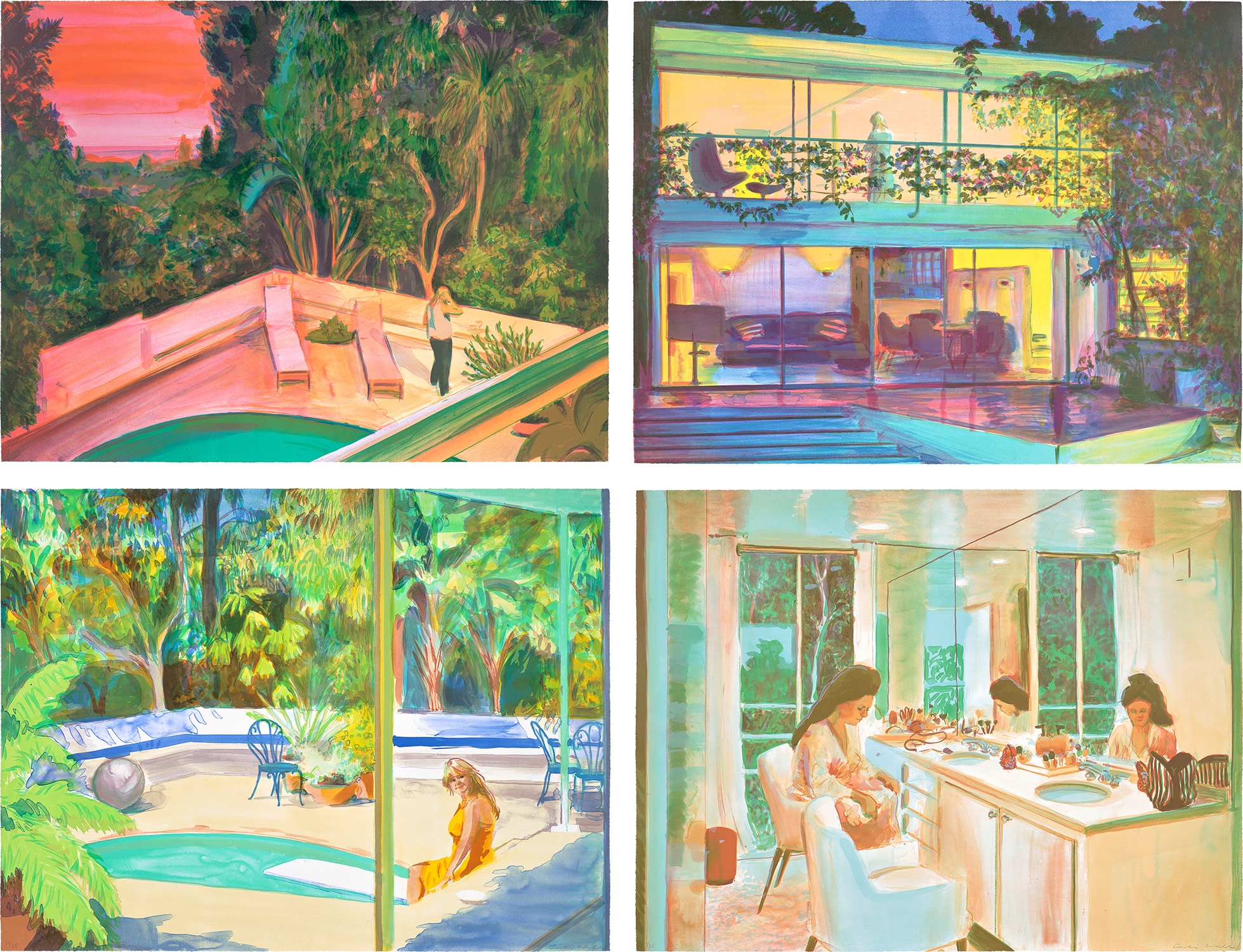
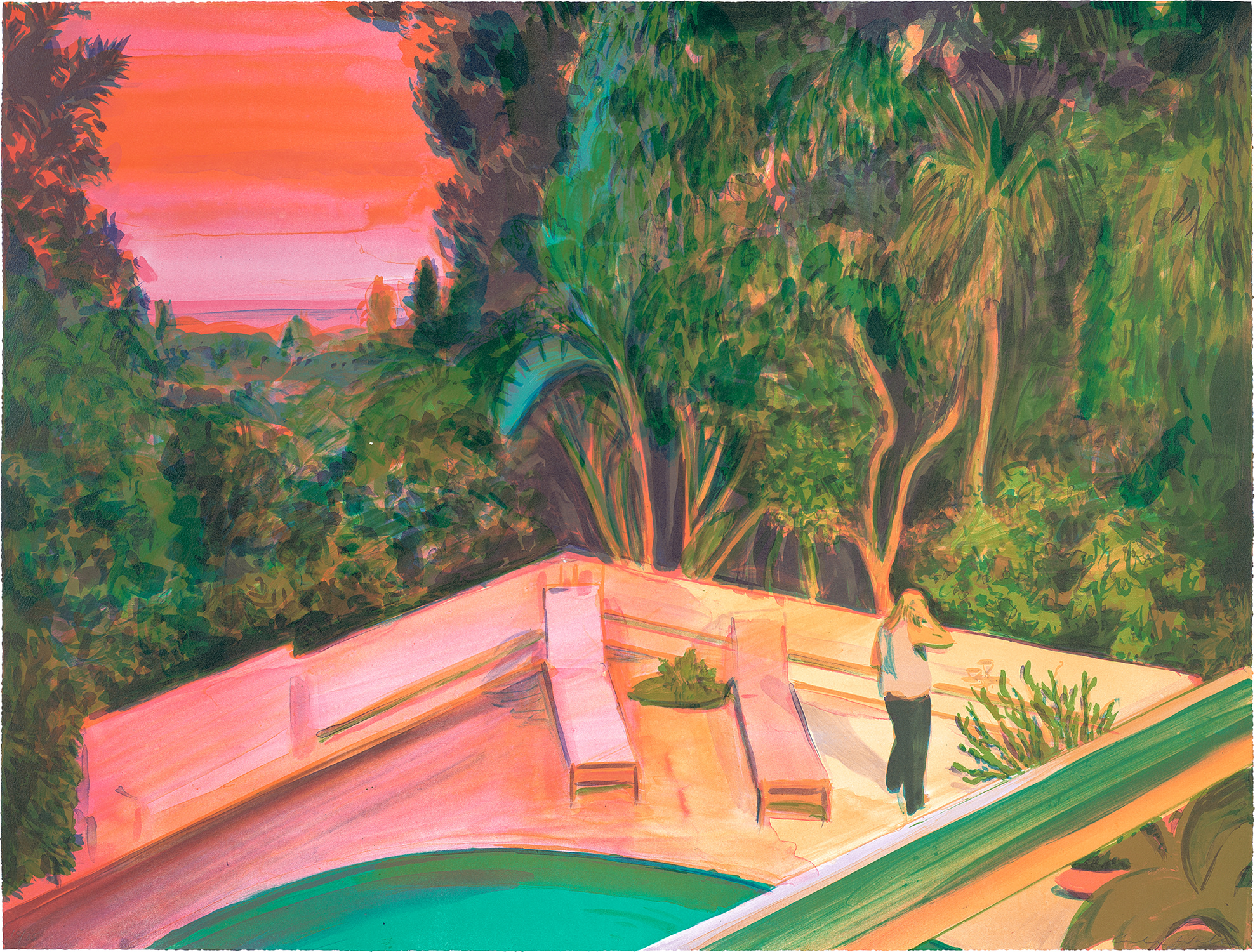
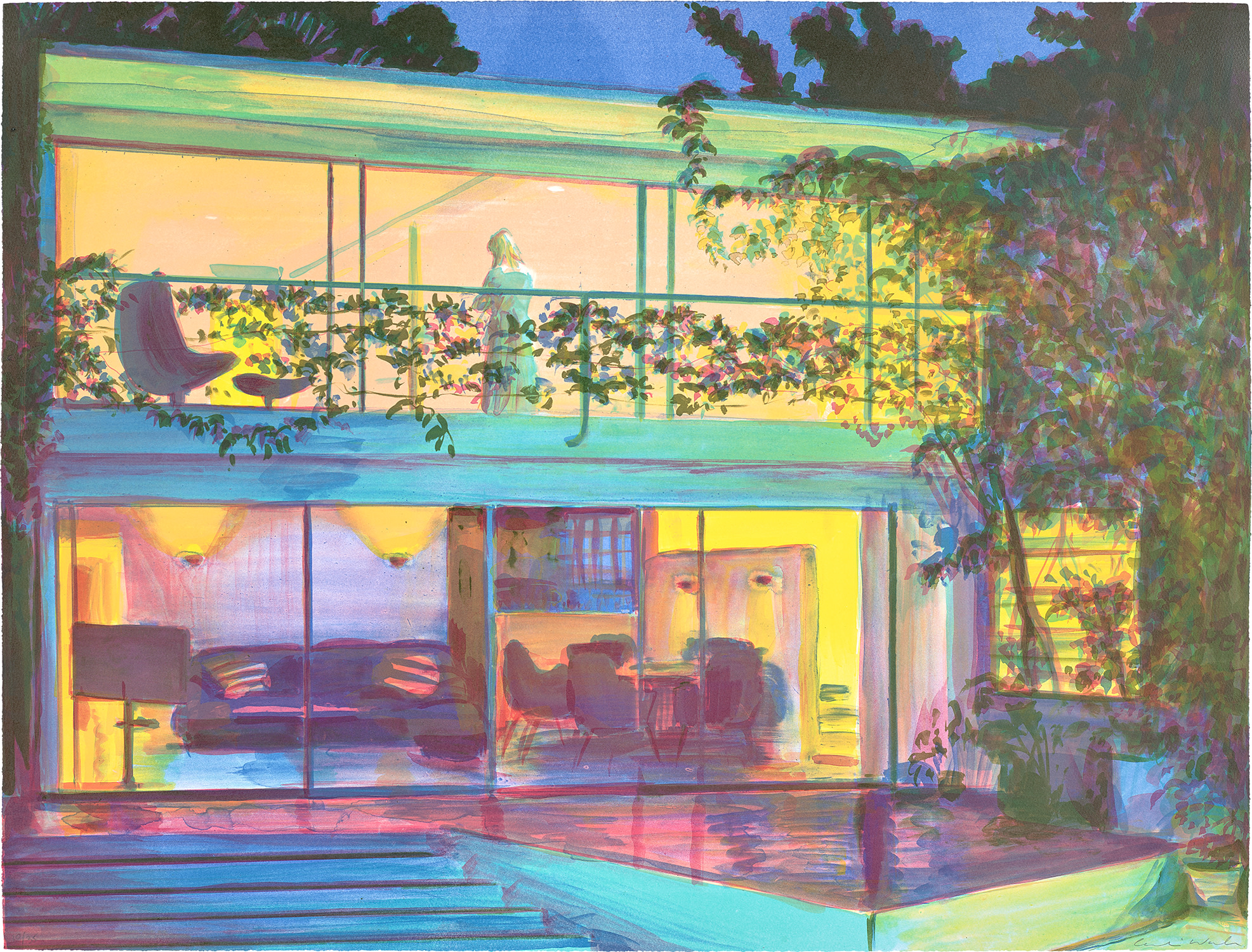
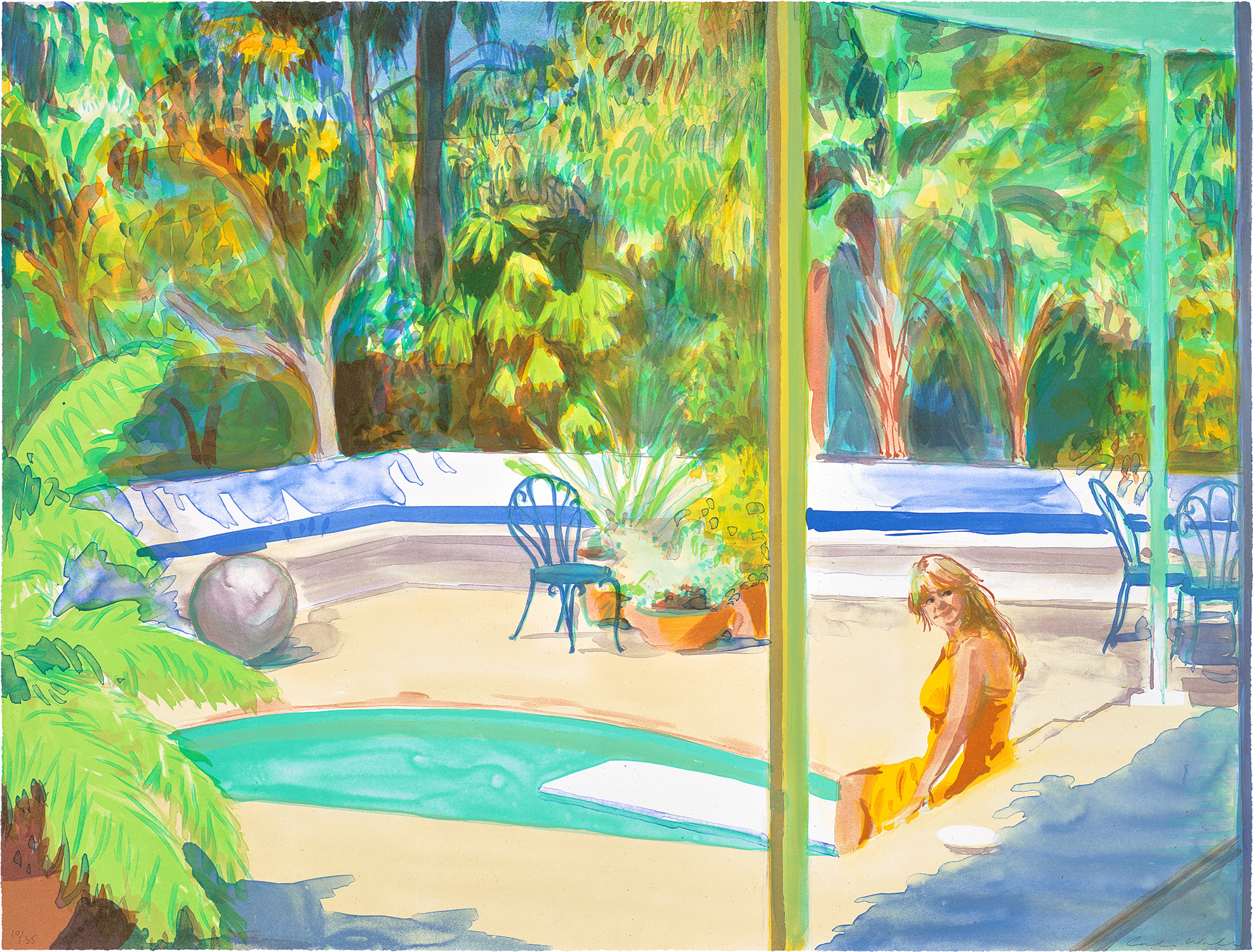
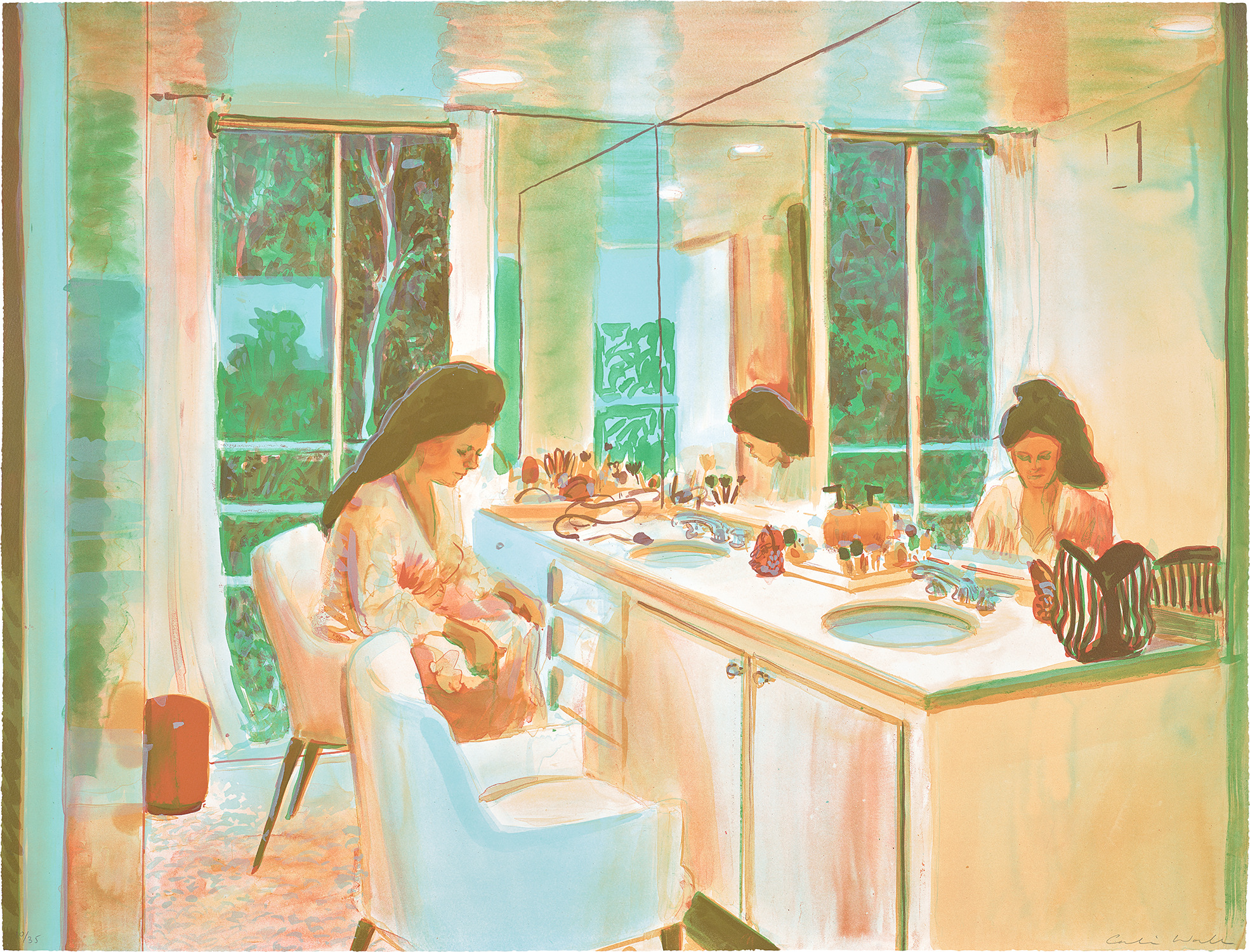
163
Caroline Walker
Sunset
- Estimate
- £12,000 - 18,000♠
Further Details
“The cinematic is very important in my work, and I tend to think about a series of work as being like stills from a film, but not the ones that reveal the plot.”
—Caroline Walker
Bathed in sumptuous warm light, Caroline Walker’s Sunset portfolio is comprised of four cinematic compositions that capture glimpses into the life of an imagined female figure in her luxurious Los Angeles abode. Evoking both glamour and the everyday, the semi-fictional character is partly inspired by Walker’s model, previously a Miss America beauty queen, whom the artist choreographed amidst a Hollywood Hills home to create the compositions.
Beyond the warm glow of twilight and the vibrant colours of Modernist décor there is an uncanny, unspoken admission of watching. With their intended cinematic viewpoints, the images follow the attractive young woman moving around the comfort of her home – however, what she doesn’t realise is that she is being observed. In Calling, the woman has her back turned to the audience engaging in a casual telephone conversation at sunset. The vantage point is reversed in the following Vigil, where once again we watch the figure with her back turned. This time we assume she is in her bedroom – a clear imposition on a private moment. The setting of Brushwork is even more intimate, the protagonist appearing in her boudoir as a triplicate, thus intensifying the element of observation. It is only in Bathed where the figure is turned towards the viewer looking back into her house. However, she does not hold at the viewer’s gaze but instead her attention is to the right. Once again, she has not quite escaped our obtruding stare.
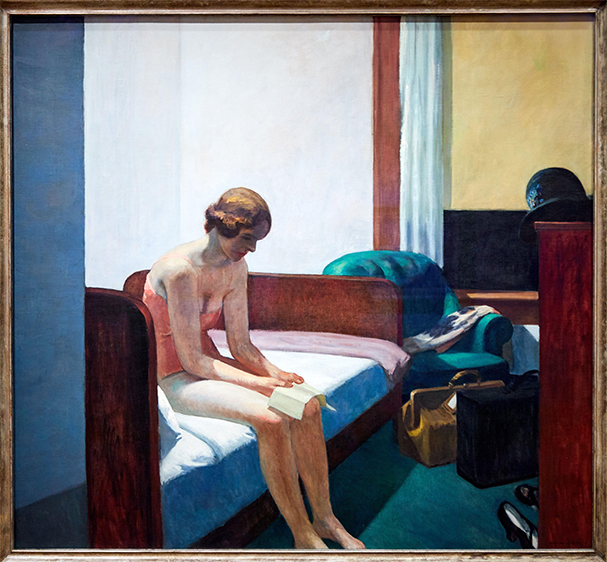
Edward Hopper, Hotel Room, 1931, Thyssen Bornemisza Museum, Madrid. Image: Album / Alamy Stock Photo, Artwork: © Heirs of Josephine Hopper / Licensed by Artists Rights Society (ARS), NY, DACS, London 2024
Sunset bears familiarity with the work of Edward Hopper, a master of subtle allusion. In his 1931 Hotel Room, we see a woman slumped on the edge of her hotel bed absorbed in thought. She has not yet unpacked – perhaps she is only there for the night – her hat teetering on the cabinet edge as if discarded with careless haste. With hunched shoulders, the woman seems dispirited after reading the piece of paper in her hand, a timetable for trains next day. The formal arrangements in the composition point to a moment of interim, something non-permanent. Moreover, the normality of such a mundane scene creates a realism in the unconsidered daily moments and evokes a thought-provoking introspection. Walker’s images contrast significantly with Hopper’s cool tones, adopting an electric colour palette that reflects the Los Angeles scenery and Hollywood glitz. However, the position of the viewer is the same; rendered a voyeur, we once again watch a disrobed woman in quiet contemplation. It is another private moment of solitude upon which we stage our imposition.
Sunset's element of voyeurism is enhanced by the fact that Walker intended the images to be filmic, with no specific narrative sequence but a sense of continual flow between the scenes. This, paired with the glamorous Hollywood setting and the sense that we are observing an oblivious character creates a cinematic experience as if watching a movie. The subject recalls Alfred Hitchcock’s New York-based thriller Rear Window, in which we see James Stewart’s character watching Grace Kelly dance freely in her home through his window. She doesn’t realise she is being watched; it is not a conscious performance but a hidden invasion of privacy, privileging the male gaze at the expense of female subjectivity.
Opening scene of Rear Window, 1954, directed by Alfred Hitchcock.
Following Walker’s 2014 Initiations series, the Sunset portfolio is the artist’s second exploration in lithography and illustrates her refined sensitivity to colour and atmosphere. Through painterly strokes that overlay transparent layers of colour, she builds intricate scenes that vividly capture the richness of California's evening sunlight. The medium also allows an element of creative freedom; experimenting with the vibrancy of the colours creates an interesting juxtaposition to the uneasy subliminal messaging. The Sunset lithographs nevertheless establish a compelling, deliberate tension between observer and the observed. Exacerbated by an element of desire for both the woman’s effortless beauty and extravagant Hollywood life, we don’t just want to observe but be a part of her world.